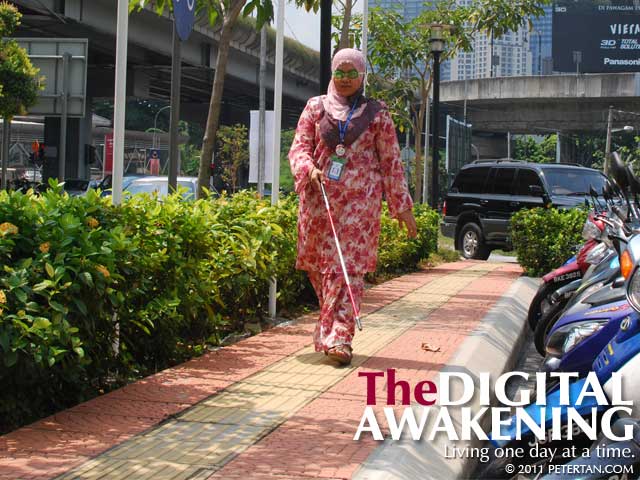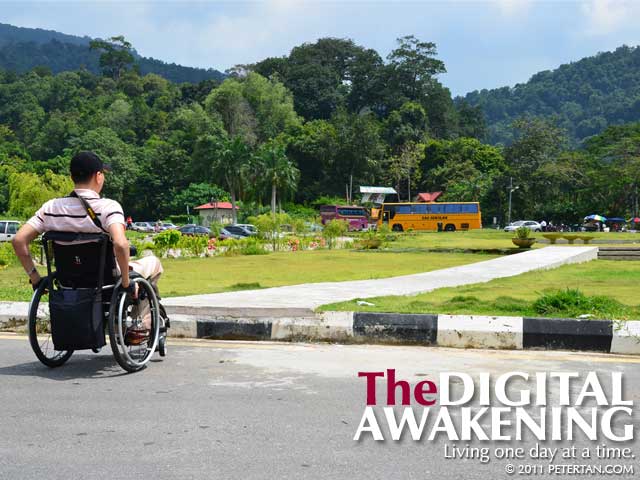The second day of the training for the Return To Work Section staff of PERKESO entailed actual site audit. Participants were divided into five groups accompanied by a facilitator each. I was assigned to Group 4 that was to audit Menara PERKESO, the organisation’s headquarters at Jalan Ampang. Incidentally, several participants of the group worked there, which made the exercise easier as they were familiar with the premises.
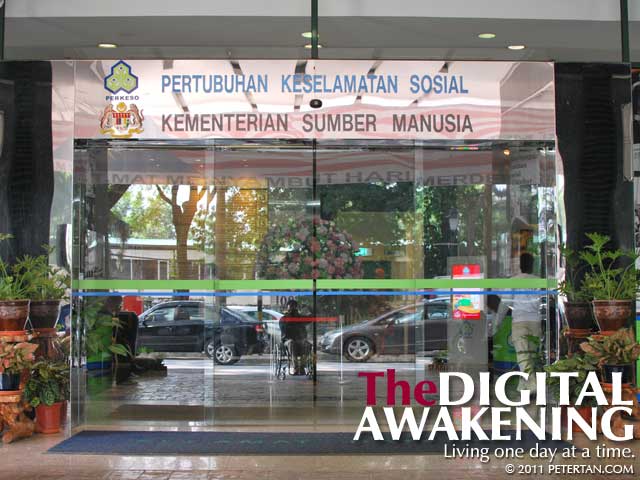
Menara PERKESO at Jalan Ampang – Headquarters of the Social Security Organisation Malaysia
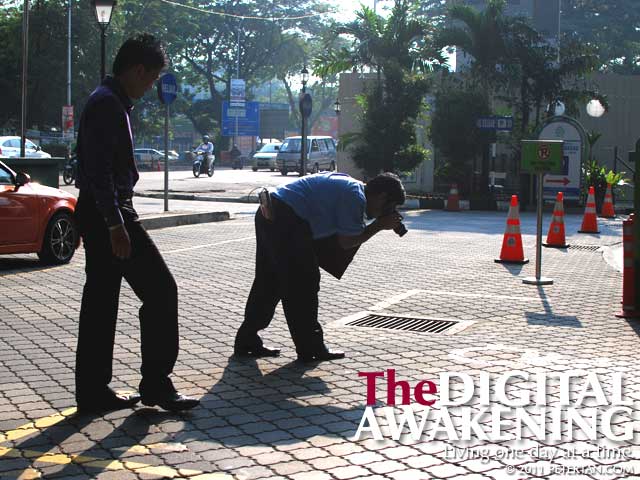
Making photographic record for access audit of an accessible parking at Menara PERKESO.
Members of the group that I facilitated displayed great enthusiasm and initiative during the site audit. Although time allocated for this practice was limited, they tried to cover as much ground as possible. If only the officers of local governments showed half as much spirit in ensuring that the built environment is accessible, the infrastructure would not be in the situation it is now where disabled people face great difficulties with barriers all over the place.
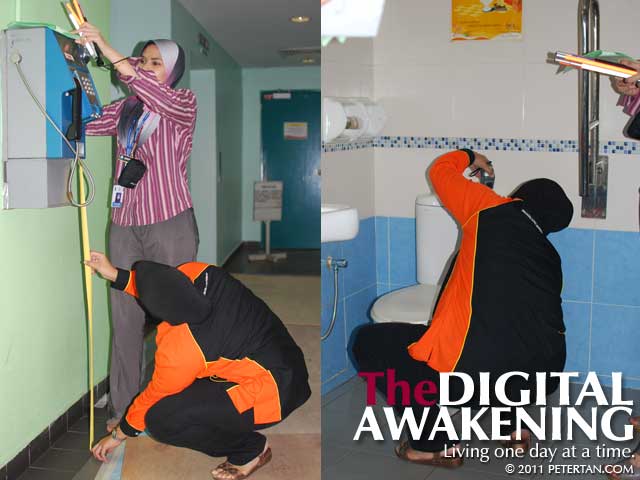
Measuring public telephone and toilet seat height at Menara PERKESO.
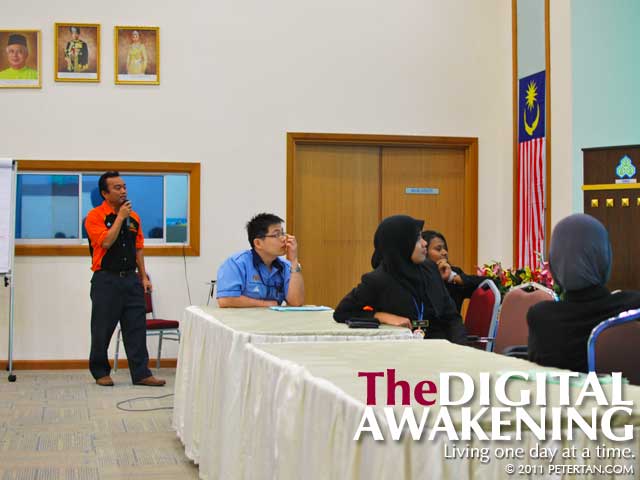
Group presentation on findings and recommendations at Audit Access Training for PERKESO’s Return To Work Section.
Participants were required to make a presentation of their findings and make recommendations according to the Malaysian Standard MS 1184: Code of Practice on Access for Disabled Persons to Public Buildings. Generally, all of them have a good grasp of various barriers in the buildings that they audited. In fact, I was surprised at how detailed their findings were. What they need now is more practice in producing an audit report with precise recommendations that is useful to building owners and contractors rectifying the problems. In summing it up, I would say the participants did well and PERKESO is doing the right things where disability issues are concerned.
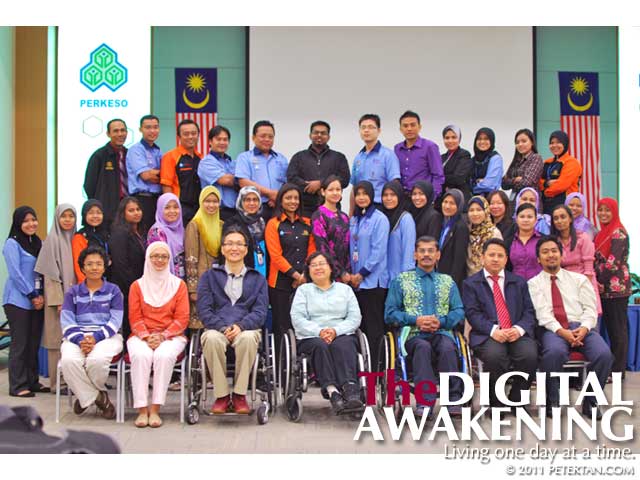
Group photo at conclusion of Audit Access Training for PERKESO’s Return To Work Section.

